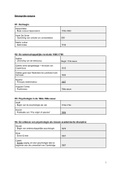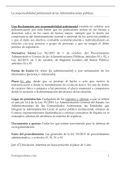Samenvatting
Summary: The Study of Language (George Yule) 6th Edition
Summary of the book 'The Study of Language' (George Yule) [6th edition]. Chapters: 1, 2, 5, 6, 7, 8, 9, 10, 11, 12, 13, 14, 16, 18, 19, 20 Includes all the terms mentioned in bold with clear examples in 23 pages.
[Meer zien]














